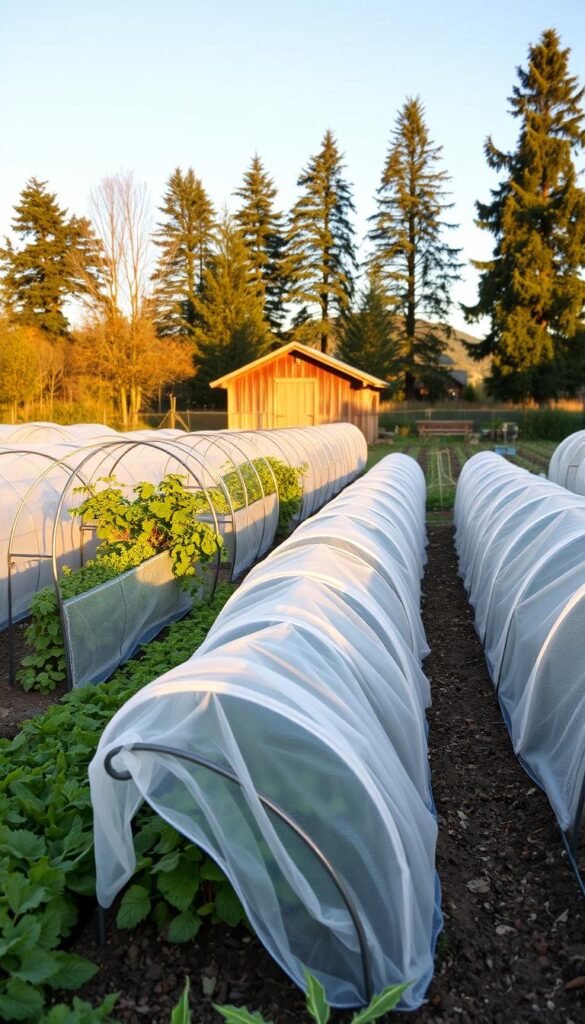Want fresh greens long after summer fades? Imagine harvesting crisp lettuce in November or protecting seedlings from spring frosts. Simple tools like hoop houses and row covers can stretch your gardening calendar by weeks—or even months.
These structures act like cozy blankets for plants. They trap warmth, block harsh winds, and shield tender crops from sudden temperature drops. Best of all, you don’t need fancy equipment. A basic DIY setup with PVC pipes and fabric can work wonders.
By creating microclimates, these methods let you control conditions in small garden areas. Delicate veggies thrive, pests stay out, and your soil stays warmer longer. Plus, they’re reusable year after year with minimal upkeep.
Ready to boost your garden’s potential? We’ll walk through choosing the right location, building affordable shelters, and maintaining ideal growing conditions. Let’s turn those chilly days into productive ones!
Preparing Your Garden for a Longer Growing Season
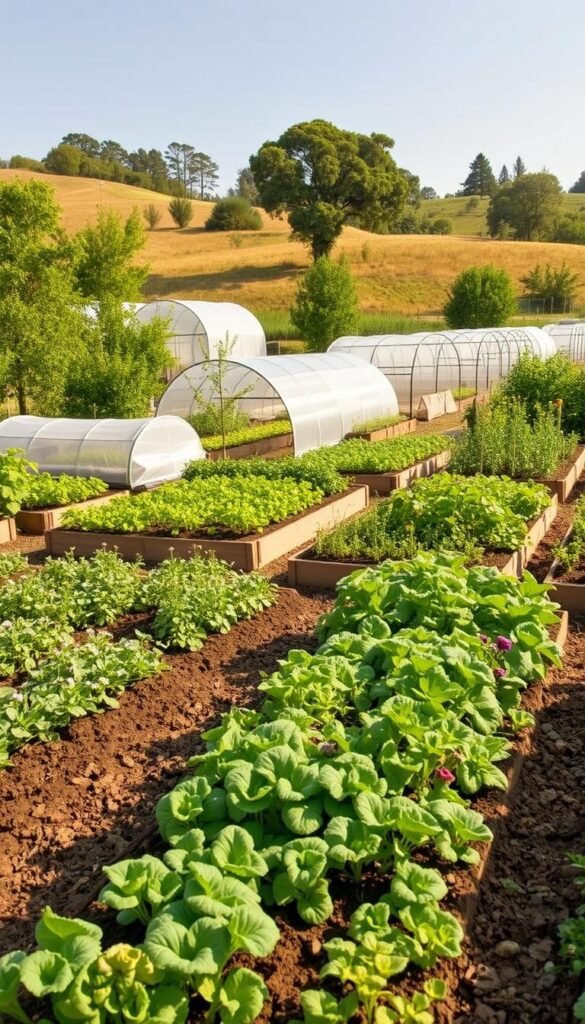
Smart garden placement unlocks your plants’ full potential. Where you grow matters as much as what you grow—especially when battling chilly weather.
Selecting the Optimal Garden Location
Face your garden southward. Southern exposure captures maximum light during short winter days. Avoid valley-like spots where frost settles—cold air pools in low areas.
Position beds near walls or fences. These structures absorb daytime heat and radiate warmth at night. Your vegetable seedlings get natural protection from harsh wind on three sides.
Utilizing Sun Exposure and Wind Protection
Track how sun angles change with seasons. Leafy greens need 4-6 hours of daily light in cold months. Root crops thrive with slightly less.
Create windbreaks using burlap screens or evergreen shrubs. Strong gusts dry out soil and stress plants. A simple barrier can reduce wind speed by 50% within 10 feet.
Improve drainage by mixing compost into clay-heavy earth. Well-aerated dirt warms faster in spring and resists waterlogging during rains. Healthy roots mean happy plants all growing season.
Building and Using DIY Hoop Houses
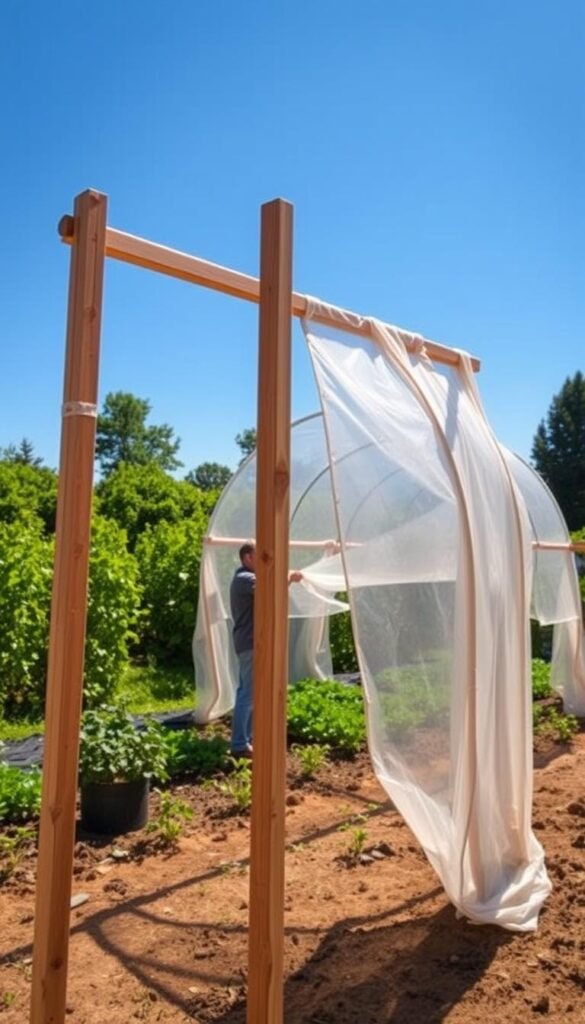
Transform your backyard into a year-round growing space with customizable shelters. These hoop house designs adapt to your space and budget while shielding plants from unpredictable weather.
Constructing a Garden Bed Hoop House
Start with ½-inch PVC pipes cut to 8-foot lengths. Bend them into arches over your beds, spacing pipes 3 feet apart. Secure pipe ends with rebar stakes or metal ground anchors.
Drape 6 mil plastic over the frame, leaving extra material at the base. Use wire clips or snap clamps to fasten the covering tightly. Leave one end open for airflow or seal completely during frost alerts.
Exploring Greenhouse-Style Hoop Houses
Larger structures use cattle panel arches or wooden frames for stability. These walk-in tunnels let you tend plants without removing the cover. Install roll-up sides using pulley systems for summer ventilation.
Choose UV-resistant plastic for multi-season use. Add a layer of floating row fabric beneath the main cover for extra insulation on frigid nights.
- Open ends daily when temperatures exceed 50°F
- Weigh down edges with sandbags during storms
- Replace torn plastic immediately to maintain heat
Exploring Row Covers and Cold Frames for Season Extension
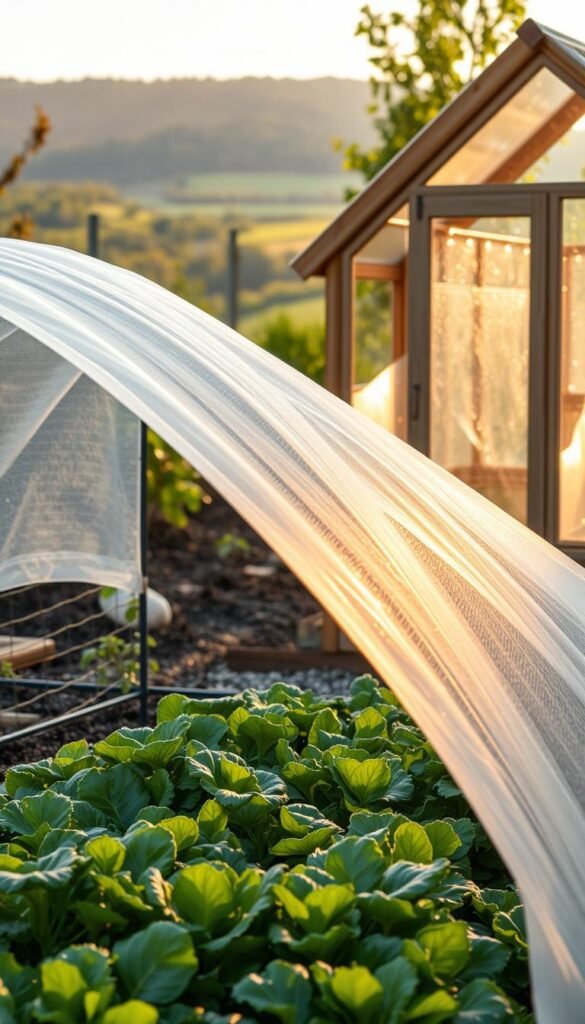
Gardening doesn’t have to stop when temperatures drop—discover tools that shield your crops while letting sunshine work its magic. These lightweight solutions act like invisible shields, balancing protection and growth.
Benefits of Transparent Protective Covers
Row covers create a breathable barrier against frost while allowing 85-90% of sunlight through. Made from spun-bond polyester or polypropylene, they let plants photosynthesize freely while trapping warmth. Drape them directly over crops or support them with hoops for better airflow.
Cold frames take protection up a notch. These clear-topped boxes use solar energy to warm soil and seedlings during daylight. At night, their insulated design prevents heat escape. Perfect for hardening off starters or growing cold-tolerant greens into winter.
- Anchor covers with U-shaped pins or rocks to withstand gusts
- Open cold frame lids on sunny days above 45°F to prevent scorching
- Layer covers during extreme cold—studies show double layers boost warmth by 4-6°F
University research proves 1.5-ounce fabric offers the best balance between light transmission and frost protection. Pair these tools with proper timing, and you’ll harvest crunchy kale long after neighbors pack up their tools.
Extending the Season: Using Hoop Houses and Row Covers
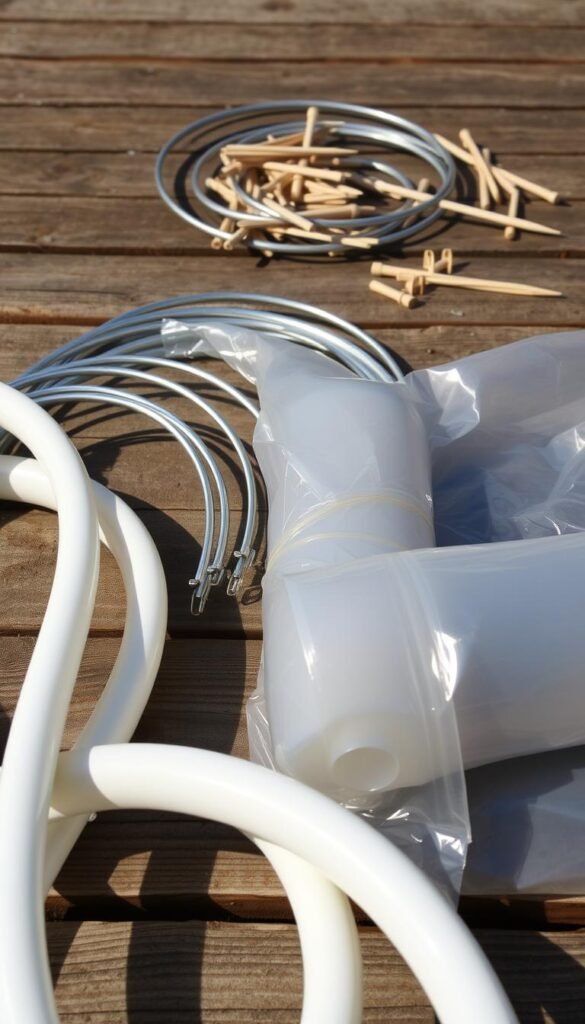
Your garden’s success hinges on two critical factors: durable materials and smart microclimate management. Let’s explore how to build resilient shelters while keeping conditions ideal for your greens.
Choosing the Right Materials and Techniques
Start with sturdy frames. Galvanized metal pipes outlast PVC in windy areas, while flexible fiberglass rods work for temporary setups. For plastic covers, 6-mil polyethylene resists tearing—look for UV-treated options that last 3-5 seasons.
Fabric weight matters. Use 0.55 oz/sq yd row covers for frost protection down to 28°F. Heavy-duty 1.5 oz versions handle colder temperatures but reduce light by 15%. Pair these with hoop structures for airflow that prevents mold.
Maintaining Temperature, Light, and Ventilation
Thermometers are your best friends. Place one at plant level and another outside. Open covers when indoor air hits 75°F—prop up sides with sticks or use automatic vent openers.
Nighttime requires strategy. Close shelters before sunset to trap warmth. Add old blankets over row covers during hard freezes. For greenhouse-style setups, install exhaust fans to circulate stagnant air.
- Swap torn plastic immediately—patch kits work for small holes
- Use clamps, not tape, to secure covers against gusts
- Rotate crops seasonally to balance soil nutrients
Enhancing Plant Growth with Supplemental Strategies
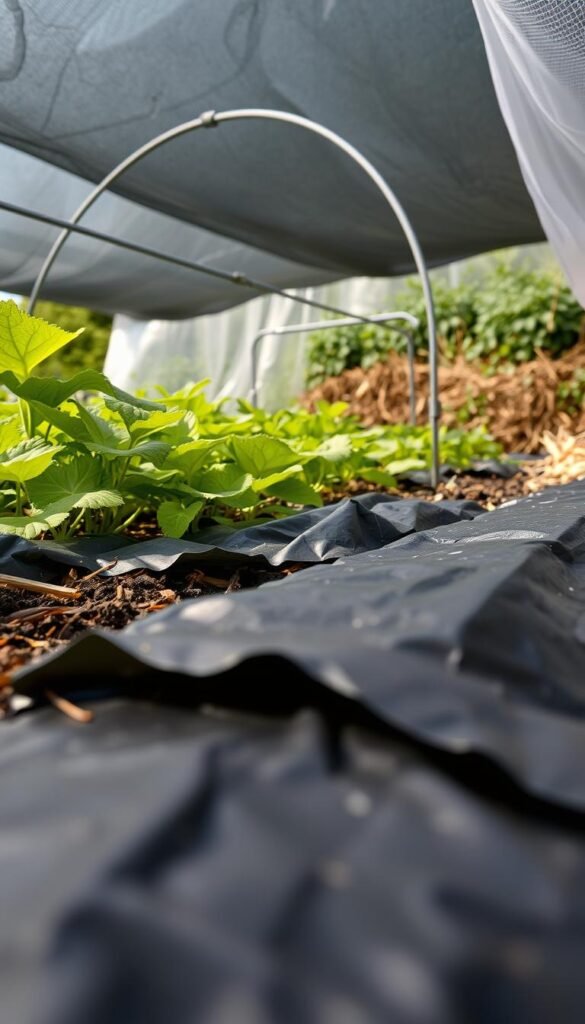
What if your garden could stay productive even as frost creeps in? Pair your existing protections with smart add-ons that supercharge plant health through colder months.
Soil Warmers and Frost Fighters
Plastic mulches work like solar blankets for your dirt. Clear versions let sunlight penetrate, creating a mini-greenhouse effect at ground level. Black types absorb heat while blocking weeds—perfect for heat-loving crops like tomatoes.
Prepare beds by raking soil smooth and removing rocks. Lay drip lines first if using irrigation. Secure plastic edges with dirt or metal pins, leaving 4-inch gaps between rows for watering. Your soil stays 5-8°F warmer, helping roots thrive when air temperatures drop.
For fragile seedlings, try these insulators:
- Hot caps: Plastic domes that trap daytime warmth
- Bubble wrap sleeves: Wrap stems during frost alerts
- Cloches: Milk jugs with bottoms cut off work great
These tricks lock in moisture and use ambient heat from the ground. Combine them with row covers, and you’ll extend growing season by weeks. Even in winter, your plants get cozy conditions without fancy greenhouse gear!
Wrapping Up Your Garden Extension Journey
Your garden’s potential doesn’t fade with summer’s end. By combining hoop houses, row covers, and smart techniques, you create a fortress against frost while nurturing crops through colder months. Remember: strategic placement, sturdy materials, and daily adjustments turn challenges into opportunities.
Start by choosing sunny, wind-protected spots for garden beds. Master simple builds like PVC frames draped with breathable fabric. Monitor temperatures closely—ventilate during warm days, seal tightly at night. These steps shield plants from harsh weather while boosting soil warmth.
Don’t fear experimentation. Try layering row covers over tunnels for extra insulation. Secure edges with wire or weights to block pests and gusts. Small tweaks, like adding cold frames or adjusting covers weekly, yield big rewards.
With these tools, your vegetables thrive long after others wilt. Fresh harvests in December? Crisp greens in March? That’s the power of season-smart gardening. Now go dig into those extended growing days—your future self will thank you!

